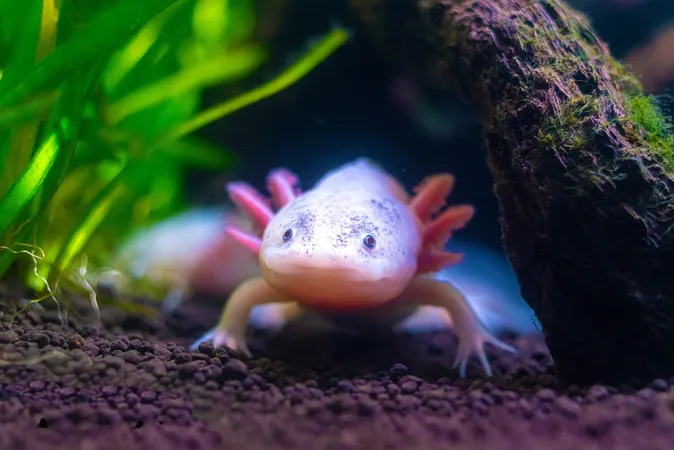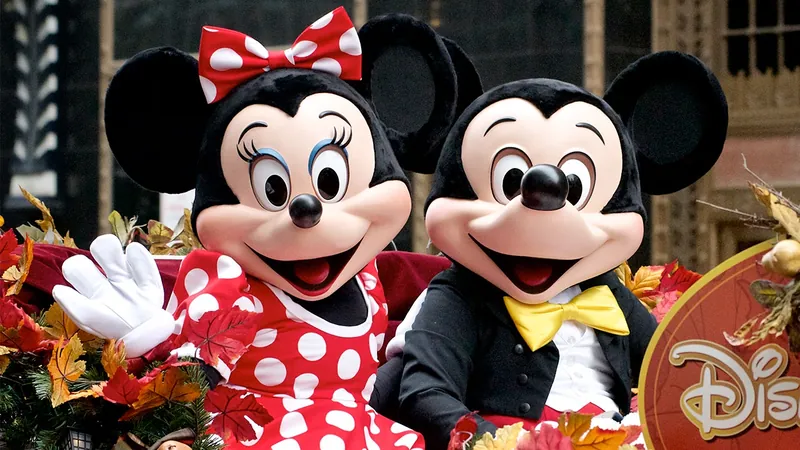
The Rising Fame of Axolotls: Adorable Creatures Caught in the Crosshairs of Extinction
2024-12-23
Author: Ken Lee
In recent years, axolotls—those charming amphibians known for their pink color and feathery gills—have captured the hearts of people worldwide. You may have spotted them in pet stores, as cuddly plush toys, or even in popular video games like Minecraft. However, while their popularity skyrockets, their wild population faces a dire crisis of extinction.
The Adorable Ambassador of Aquatic Life
James Monaghan, a biology professor at Northeastern University, has dedicated years to studying axolotls and their fascinating ability to regenerate. “Axolotls have exploded in popularity over the past couple of years,” he remarked. Images of these perpetual-smiling creatures have flooded social media, naturally attracting the younger audience, who can't resist their unique allure. “They’re pink, they have feathers,” Monaghan mused. “If you were to design a cute animal, you might end up with something like the axolotl.”
Cultural Icons Born from Ancient Legends
The axolotl is not just a modern phenomenon; its roots extend back to ancient Aztec culture, being named after the god Xolotl. Originally residing in Lake Xochimilco near Mexico City, the axolotl has transformed from a regional treasure to an international sensation, partly due to its introduction into the gaming world. Minecraft, a highly popular game among younger audiences, has featured axolotls, igniting curiosity and educational quests among players. “Players often immerse themselves in building environments for these creatures,” explained Alexandra To, an assistant professor of computer science at Northeastern.
Interestingly, Monaghan notes that media portrayals have uplifted the axolotl's status. Characters like Toothless from "How To Train Your Dragon" share striking similarities with the axolotl, from their friendly smiles to their whimsical features.
A Scientific Marvel
Bathed in both cultural significance and scientific intrigue, axolotls serve as invaluable subjects in research. Their exceptional regenerative abilities allow them not just to regrow limbs but also to restore parts of vital organs like lungs. “They rarely experience infections post-injury and boast remarkable resistance to cancer,” Monaghan highlighted. They’ve been key to advancing research in genetics and developmental biology, particularly with modern tools like CRISPR, which helps scientists identify the genes responsible for their unique regenerative properties.
However, the axolotl we know today comes from a lineage derived from a single population collected in 1864, making every lab and pet axolotl a descendant of this original group.
An Ecosystem in Crisis
Despite their rising fame and the whimsical charm they radiate, axolotls in the wild are critically endangered. Once thriving in Lake Xochimilco, they have drastically dwindled in number, becoming difficult to find. “Every decade since the 1950s has seen their population crash further,” Monaghan lamented, emphasizing the urgency of the situation.
Their acute sensitivity to environmental changes exacerbates their plight. Pollution, invasive species, and climate change continue to threaten their delicate habitat, making survival increasingly difficult.
The Road Ahead: Conservation Challenges and Hopes
Reintroducing lab-bred axolotls to their natural habitat is not as straightforward as one might assume. “It’s not advisable to take a species that has been inbred for over a century and simply return it to a drastically altered ecosystem,” Monaghan warned, pointing out that modern axolotls may no longer thrive in their ancestral home.
Nevertheless, hope exists through heightened awareness and conservation efforts. The team behind Minecraft is actively championing conservation, using their platform to mirror the axolotl's endangered status within the game. “Their integration into Minecraft serves as an educational tool, promoting awareness about the real-world issues facing these unique creatures,” said To.
Monaghan is also actively involved in conservation efforts through the Ambystoma Genetic Stock Center, aiming to enhance understanding and preservation. His insights help direct initiatives crucial for protecting the axolotl's future.
As interest in axolotls continues to surge, ensuring their survival in the wild will require dedicated efforts. “It feels like axolotls are everywhere right now,” Monaghan noted, and while their rise in popularity is a symbol of hope, the work to safeguard their existence has only just begun. The world must act quickly—not just to appreciate these extraordinary animals but to ensure they inspire future generations.




 Brasil (PT)
Brasil (PT)
 Canada (EN)
Canada (EN)
 Chile (ES)
Chile (ES)
 España (ES)
España (ES)
 France (FR)
France (FR)
 Hong Kong (EN)
Hong Kong (EN)
 Italia (IT)
Italia (IT)
 日本 (JA)
日本 (JA)
 Magyarország (HU)
Magyarország (HU)
 Norge (NO)
Norge (NO)
 Polska (PL)
Polska (PL)
 Schweiz (DE)
Schweiz (DE)
 Singapore (EN)
Singapore (EN)
 Sverige (SV)
Sverige (SV)
 Suomi (FI)
Suomi (FI)
 Türkiye (TR)
Türkiye (TR)